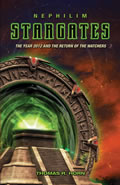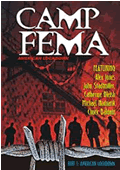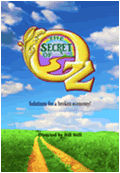PART 15
By Thomas R. Horn
May 6, 2012
NewsWithViews.com
From Seventy-Two Demons to Feathered Serpents: What You Do—and Do Not—Learn in School about American History
In public
school, children are taught how a world map was created in 1507 by German
cartographer Martin Waldseemüller. On this map, the lands of the
 Western
Hemisphere are first called “America,” named so after an Italian
explorer and navigator named Amerigo Vespucci. According to the official
account, the United States of America received the latter part of its
name when Waldseemüller used the feminized Latin version of Amerigo
to call this land America.
Western
Hemisphere are first called “America,” named so after an Italian
explorer and navigator named Amerigo Vespucci. According to the official
account, the United States of America received the latter part of its
name when Waldseemüller used the feminized Latin version of Amerigo
to call this land America.
Or, at least that’s what we are told.
What kiddies in public education are not taught, however (and which mainstream academia has yet been willing to accept), is a rival explanation for the origin of “America” related to Mesoamerican serpent-worship, biblical giants, Freemasonry, and even the year 2012.
The story begins long before the Spaniards arrived on this continent and was chronicled in the hieroglyphic characters (and repeated in oral history) of the sacred, indigenous Maya narrative called the Popol Vuh. Sometime between 1701 and 1703, a Dominican priest named Father Francisco Ximénez transcribed and translated the Mayan work into Spanish. Later his text was taken from Guatemala to Europe by Abbott Brasseur de Bourbough where it was translated into French. Today the Popol Vuh rests in Chicago’s Newberry Library, but what makes the script interesting is its creation narrative, history, and cosmology, especially as it relates to the worship of the great “feathered serpent” creator deity known as Q’uq’umatz; a god considered by scholars to be roughly equivalent to the Aztec god Quetzalcoatl and the Yucatec Mayan Kukulkan. According to Freemasons like Manly P. Hall, no other ancient work sets forth so completely the initiatory rituals of the great school of philosophic mystery, which was so central to America’s Baconian dream of the New Atlantis, than the Popol Vuh. What’s more, Hall says, it is in this region where we find the true origin of America’s name and destiny.
In The Secret Teachings of All Ages, Hall writes:
This volume [Popol Vuh] alone is sufficient to establish incontestably the philosophical excellence of the red race.
“The Red ‘Children of the Sun,’” writes James Morgan Pryse, “do not worship the One God. For them that One God is absolutely impersonal, and all the Forces emanated from that One God are personal. This is the exact reverse of the popular western conception of a personal God and impersonal working forces in nature. Decide for yourself which of these beliefs is the more philosophical [Hall says sarcastically]. These Children of the Sun adore the Plumèd Serpent, who is the messenger of the Sun. He was the God Quetzalcoatl in Mexico, Gucumatz in Quiché; and in Peru he was called Amaru. From the latter name comes our word America. Amaruca is, literally translated, ‘Land of the Plumèd Serpent.’ The priests of this [flying dragon], from their chief centre in the Cordilleras, once ruled both Americas. All the Red men who have remained true to the ancient religion are still under their sway. One of their strong centres was in Guatemala, and of their Order was the author of the book called Popol Vuh. In the Quiché tongue Gucumatz is the exact equivalent of Quetzalcoatl in the Nahuatl language; quetzal, the bird of Paradise; coatl, serpent—‘the Serpent veiled in plumes of the paradise-bird’!”
The Popol Vuh was discovered by Father Ximinez in the seventeenth century. It was translated into French by Brasseur de Bourbourg and published in 1861. The only complete English translation is that by Kenneth Sylvan Guthrie, which ran through the early files of The Word magazine and which is used as the basis of this article. A portion of the Popol Vuh was translated into English, with extremely valuable commentaries, by James Morgan Pryse, but unfortunately his translation was never completed. The second book of the Popol Vuh is largely devoted to the initiatory rituals of the Quiché nation. These ceremonials are of first importance to students of Masonic symbolism and mystical philosophy, since they establish beyond doubt the existence of ancient and divinely instituted Mystery schools on the American Continent. [1]
Thus
from Hall we learn that Freemasons like him believe “ancient and
divinely instituted” mystery religion important to students of Masonry
came to Amaruca/America—the Land of the Plumèd Serpent—from
knowledge that the Red Man received from the dragon himself. What Hall
conceals is that  when
he refers to those “extremely valuable commentaries” made
by James Pryes, he is referencing an article from Helena Blavatsky’s
Lucifer magazine, which was published by the Theosophical Society and
that illuminated the inner doctrine of Rosicrucianism, Freemasonry, and
all the secret orders—that Lucifer is the “angel of light”
who, in the form of a serpent, bids mankind to partake of the “Tree
of Knowledge of Good and Evil” so that their eyes would be open
and they could become as gods. Even to this day, in the secret societies,
Lucifer is considered this benevolent serpent-god who has nothing more
than the best intentions for man, while Jehovah is an evil entity who
tries to keep mankind in the dark and punishes him if he seeks the truest
wisdom. Since these ancient serpent legends include the Mesoamerican feathered
serpent gods and can be looked upon as a historical testament of that
Angel thrown down by God, “then perhaps The Land of the Plumèd
Serpent may also be known as the Land of Lucifer,” concludes Ken
Hudnall in The Occult Connection II: The Hidden Race.[2]
when
he refers to those “extremely valuable commentaries” made
by James Pryes, he is referencing an article from Helena Blavatsky’s
Lucifer magazine, which was published by the Theosophical Society and
that illuminated the inner doctrine of Rosicrucianism, Freemasonry, and
all the secret orders—that Lucifer is the “angel of light”
who, in the form of a serpent, bids mankind to partake of the “Tree
of Knowledge of Good and Evil” so that their eyes would be open
and they could become as gods. Even to this day, in the secret societies,
Lucifer is considered this benevolent serpent-god who has nothing more
than the best intentions for man, while Jehovah is an evil entity who
tries to keep mankind in the dark and punishes him if he seeks the truest
wisdom. Since these ancient serpent legends include the Mesoamerican feathered
serpent gods and can be looked upon as a historical testament of that
Angel thrown down by God, “then perhaps The Land of the Plumèd
Serpent may also be known as the Land of Lucifer,” concludes Ken
Hudnall in The Occult Connection II: The Hidden Race.[2]
This raises serious questions about what type of “divinely instituted” wisdom Hall had in mind for Amaruca/America, as part of the legitimate concern revolving around this disclosure stems from the fact that the Inca, Aztec, and Maya were either unquestionably gifted mathematicians and astronomers, or they really did receive advanced knowledge from someone or something. They measured the length of the solar year far more accurately than did the Europeans in their Gregorian calendar, and precisely oriented their sacred buildings and cities with stars and star clusters, particularly Pleiades and the Orion Nebula associated throughout the ancient Middle East with Osiris/Apollo/Nimrod. The pre-Columbian book, Codex Dresdensis (a.k.a. the Dresden Codex) by the Yucatecan Maya is famous for its first-known related illustrations of advanced calculations and astronomical phenomena. But how were the pre-telescopic Mesoamericans uniquely aware of such important knowledge? They themselves—like other archaic cultures did—credited ancient “gods” with bringing the heavenly information to Earth.
In 2008, late fellow researcher David Flynn may have uncovered important information related to this legend, the size and scope of which simply surpass comprehension. It involves mammoth traces of intelligence carved in stone and covering hundreds of square miles: possibly the strongest evidence ever detected of prehistoric engineering by those who were known and feared throughout the ancient world as gods—the giant offspring of the Watchers.
In the same way modern archeologists only recently found the ruins of hidden Mayan temples in the Guatemalan jungle by using satellites, Flynn employed above-Earth orbiting satellites to image a vast network of patterns that surround Lake Titicaca in Bolivia, South America, which extend for more than one hundred miles south into the Bolivian desert. The patterns display geometric repetition and intelligent designs, including interlocking rectangular cells and mounds, perfectly straight lines, and repeated sharp-angle turns that do not occur naturally. These cover every topographical feature of the high plateau surrounding the lake, over flood plains, hills, cliffs, and mountains. The full report of this remarkable research plus numerous satellite images is available at RaiderNewsUpdate.com/Giants.
Twelve miles south of Lake Titicaca, located within the center of the array of geoglyphs, lies the megalithic ruins of Tiahuanaco. Known as the “American Stonehenge” or the “Baalbek of the New World,” its architecture exhibits technological skill that exceeds modern feats of building. At Tiahuanaco, immense stone works were joined with modular fittings and complex breach-locking levels that have never been seen in any other ancient culture. According to engineers, one of the largest single stones ever to be moved and put into a building anywhere on earth (about four hundred tons) was transported to Tiahuanaco from a quarry over two hundred miles away. This feat is even more incomprehensible when one realizes the route of transport was through a mountain range up to fifteen thousand feet.
Conventional historians try to assign the age of the structures at Tiahuanaco to around 600 BC, postulating that a pre-Inca civilization, without benefit of the wheel, modern tools, or even a written language constructed these architectural marvels. But historian Arthur Posnansky studied the area for more than fifty years and observed that sediment had been deposited over the site to the depth of six feet. Within this overburden, produced by a massive flood of water sometime around the Pleistocene age (thirteen thousand years ago), fossilized human skulls were unearthed together with seashells and remnants of tropical plants. The skulls have nearly three times the cranial capacity of modern man and are displayed in the La Paz museum in Bolivia.
In addition, when the first Spanish chroniclers arrived with the conquistador Pizaro, the Inca explained that Tiahuanaco had been constructed by a race of giants called “Huaris” before Chamak-pacha, the “period of darkness,” and was already in ruins before their civilization began. They said these giants had been created by Viracocha (“Kukulkan” to the Maya and “Quetzalcoatl” to the Aztecs), the god who came from the heavens (a.k.a. the Watchers).
He (Viracocha) created animals and a race of giants. These beings enraged the Lord, and he turned them into stone. Then he flooded the earth till all was under water, and all life extinguished. This flood was called uñu pachacuti, by the Inca which means “water that overturns the land.” They say that it rained sixty days and nights, that it drowned all created things, and that there alone remained some vestiges of those who were turned into stones. Viracocha rose from the bosom of Lake Titicaca, and presided over the erection of those wondrous cities whose ruins still dot its islands and western shores, and whose history is totally lost in the night of time.[3]
Near
Lake Titicaca in the Hayu Marca Mountain region of Southern Peru at fourteen
thousand feet exists a huge, mysterious, door-like structure carved into
a solid rock face in an area long revered by Peruvian Indians as the “City
of the Gods.” Shamans still come to perform rituals at this site,
which they call Puerta de Hayu Marca or the Gate of the Gods. It measures
exactly twenty-three feet in height and width, with a recess in the center
slightly smaller than six-feet high. Native Indians say the site is “a
gateway to the lands of the  Gods”
through which, in their ancient past, great heroes arrived and then departed
with a “key” that could open the mysterious doorway. Another
legend tells of the first Incan priest—the Amaru Meru (note again
the Amaru-ca/America connection)—who used a golden disk to open
the portal, which turned the solid rock into a stargate. According to
local legend, this priest was the first of other “kings” who
came to Earth from heavenly locations specifically associated with the
Pleiades (Apollo) and Orion (Osiris). This disc-key section of the Gate
of the Gods may be depicted by a small, circular depression on the right
side of the recess of Puerta de Hayu Marca, which in turn could be related
to another “portal” not far away—the Gate of the Sun
at Tiahuanaco, identified by some historians and archaeologists as the
gate of Viracocha who created the race of giants
Gods”
through which, in their ancient past, great heroes arrived and then departed
with a “key” that could open the mysterious doorway. Another
legend tells of the first Incan priest—the Amaru Meru (note again
the Amaru-ca/America connection)—who used a golden disk to open
the portal, which turned the solid rock into a stargate. According to
local legend, this priest was the first of other “kings” who
came to Earth from heavenly locations specifically associated with the
Pleiades (Apollo) and Orion (Osiris). This disc-key section of the Gate
of the Gods may be depicted by a small, circular depression on the right
side of the recess of Puerta de Hayu Marca, which in turn could be related
to another “portal” not far away—the Gate of the Sun
at Tiahuanaco, identified by some historians and archaeologists as the
gate of Viracocha who created the race of giants
Mythology involving such giants, followed by world deluge, is universally recorded in the legends of the Inca, Maya, Olmec, and Aztec cultures of Mexico. These stories are consistent with Sumerian and Hebrew accounts of the Great Flood and of the subsequent destruction of giant nephilim whose history of human sacrifices parallel Mayan rituals (victims of Maya had their arms and legs held down while a priest cut their chests open and ripped out their hearts). The Greeks likewise recorded how prehistoric giants were responsible for the creation of megalithic structures discovered around the world, and Islamic folklore ascribes this prehistoric “building” activity to a race of super beings called “jinn” (genies):
The Jinn were before Adam: They built huge cities whose ruins still stand in forgotten places.[4]
In Egypt, the Edfu temple texts, believed to predate the Egyptians themselves, explain something of additional significance, reminiscent of nephilim activity before and after the Flood:
The most ancient of earth’s temples and monuments were built to bring about the resurrection of the destroyed world of the gods.[5]
Within the Inca religious paradigm, the oldest record of the Andean region available, the Tiahuanaco geoglyphs are therefore viewed as the vestiges of a lost civilization that knew its destiny…to be destroyed by world cataclysm. In this regard, the geoglyphs serve not only as a memorial of an ancient existence, but also as a warning for future humanity and the return of a destructive epoch, or as David Flynn concluded:
The geoglyphs seem to be physical evidence that supports the Middle and South American myths of world deluge and giants. Their discovery in modern times fits Inca and Mayan prophecies of an “awakening” to knowledge of the ancient past, of the “builder gods” and of their return. It is perhaps testament to the accuracy of these prophecies that the date, December 21, 2012, is known so widely in modern times…the end of the Mayan calendar.[6]
Secrets of Amaru-Ca in the US Capital Dome
That the Maya prehistory echoes the advent of the mysterious Watchers, their giant offspring, the end date 2012, and a connection between these histories and early American freemasonry could be beyond coincidence. In fact, what appears to be fabulous evidence that early Freemasons and those working with them were not only aware of the Mesoamerican belief system and the calendar ending date 2012, but actually incorporated it directly into the design of the Capital Dome in Washington, DC, is vividly illustrated in the commissioned artwork of Constantino Brumidi, the artist who also painted the Apotheosis of George Washington. The book Apollyon Rising 2012 explains:
Born July 26, 1805, in Rome, Brumidi was an Italian/Greek painter who made his name restoring sixteenth-century Vatican frescos, as well as artwork in several Roman palaces. Following the French occupation of Rome in 1849, Brumidi immigrated to the United States, where he became a citizen and began work for the Jesuits in New York (viewed at that time as the “hidden power and authority” of the Roman Catholic Church). This work included frescos in the Church of St. Ignatius in Baltimore, Maryland; the Church of St. Aloysius in Washington DC; and St. Stephen’s Church in Philadelphia, namely, the Crucifixion, the Martydom of St. Stephen, and the Assumption of Mary.
Abruptly in 1854, the Jesuits financed a trip for Brumidi to Mexico, where he… engaged in the curious task of making copious notes of the ancient Aztec Calendar Stone (also known as the “Stone of the Sun”), which ends in the year 2012.
Immediately upon his return from Mexico, Brumidi took his collection of notes and drawings to Washington DC, where he met with Quartermaster General Montgomery C. Meigs, supervisor of construction over the wings and Dome of the United States Capitol. Brumidi was quickly commissioned to be the “government painter,” and began adorning the hallways and Rotunda of the Capitol with pagan frescos sacred to Freemasonry, including the Apotheosis of George Washington and the famous Frieze of American History. Brumidi died in 1880 and three other artists completed the frieze, but not before Brumidi attached to his historic work—sometime between 1878–1880—a scene called Cortez and Montezuma at Mexican Temple, featuring the Aztec Calendar Stone and other important symbolism.
The Stone of the Sun depicted in Brumidi’s frieze (the circular object behind the figures on the right) is based on the actual twelve-foot tall, four-foot thick, twenty-four-ton, monolithic Aztec Calendar Stone. During the pinnacle of Aztec civilization when the Aztec dominated all other tribes of Mexico, this Stone rested atop the Tenochtitlan Temple in the midst of the most powerful and largest city in Mesoamerica. Today, Mexico City’s Cathedral, where Brumidi worked, occupies this site. The Spaniards buried the Stone there, and it remained hidden beneath the Cathedral until it was rediscovered in 1790. Then it was raised and embedded into the wall of the Cathedral, where it remained until 1885. Today, the Stone of the Sun is on display in the National Museum of Anthropology in Mexico City’s Chapultepec Park.

The inclusion of this symbolism and its accompanying idols in the U.S. Capitol Dome is important. The sun god Tonatiuh, whose face and protruding tongue are seen at the center of the Sun Stone, is the god of the present (fifth) time, which began in 3114 BC and ends in 2012. The Aztec solar calendar is second only in accuracy to the Mayan calendar, which also ends on December 21, 2012. Tonatiuh—who delivered important prophecies and demanded human sacrifices (more than twenty thousand victims per year were offered to him, according to Aztec and Spanish records, and in the single year of 1487, Aztec priests sacrificed eighty thousand people to him at the dedication of the reconstructed temple of the sun god)—was also known as the lord of the thirteen days (from 1 Death to 13 Flint), a number sacred to Aztec, Maya, and Freemasons for prophetic and mystical reasons.
Like the Maya, Aztecs believed the first age, or “First Sun,” was a time when giants had lived on earth who were destroyed by a great flood or deluge long before the Mayan or Toltec civilizations came along. The final age, or “Fifth Sun,” would end in 2012. While the Aztecs assimilated such knowledge from the Maya, they built their culture primarily on Toltec ideas. Their great city of Tenochtitlan, on an island in Lake Texcoco with its causeways, canals, marketplaces, and vast towers and temples rising majestically into the air, was so spectacular that when the conquistador Bernal Díaz del Castillo, who wrote an eyewitness account of the conquest of Mexico by the Spaniards, saw it, he exclaimed:
When we saw so many cities and villages built in the water and other great towns on dry land we were amazed and said that it was like the enchantments…on account of the great towers and cues and buildings rising from the water, and all built of masonry. And some of our soldiers even asked whether the things that we saw were not a dream.… I do not know how to describe it, seeing things as we did that had never been heard of or seen before, not even dreamed about.[7]
Not only was the Aztec culture so advanced in engineering, astronomy, and mathematics, but the warriors of Montezuma outnumbered the expedition of Cortez by a thousand to one. How then did the Spaniards conquer the Aztecs so easily? Toltec prophecy had told of Quetzalcoatl, who would come from the east as a light-skinned priest to rule their civilization. Nezhaulcoyotl, a great astrologer who supported Montezuma, believed this vision, and when Cortez arrived exactly when the prophecy said the god would return, Montezuma received him as the coming of Quetzalcoatl, and surrendered. This event is symbolized in the Cortez and Montezuma frieze by Brumidi.
Another connection between Brumidi’s prophetic Stone of the Sun depiction and Freemasonry can be seen in the serpent coiled around the sacred fire, toward which Montezuma’s left hand intentionally gestures. The sacred fire was connected to the seven-star Pleiades (Tianquiztli, the “gathering place”) by the Aztecs, and represented the final year in a fifty-two-year cycle called “calendar round,” which ended when the Pleiades crossed the fifth cardinal point at midnight that year. At this time, the Aztecs would let the fires go out and conduct the “dance of the new fire” to start the cycle again. When the priests lit the new “sacred fire” as well as the hearth fires, it ensured the movement of the sun (the serpent coiled around the sacred fire in Brumidi’s painting) along the precession anew. In the year 2012, not only will the Pleiades be in this zenith over Mesoamerica, but the alignment will come into full conjunction with the sun... This sacred knowledge is why the Pyramid of the Sun at Teotihuacan near Mexico City also corresponds with the Pleiades. Its west side and surrounding streets are aligned directly with the setting point of the Pleiades, a configuration held in high esteem by the Maya as well. They built the Kukulcan pyramid at Chichen Itza so that during the spring and autumn equinox, at the rising and setting of the sun, a slithering, snake-like shadow representing Kukulcan (Quetzalcoatl, the plumed serpent) would cast along the north stairway to the serpent’s head at the bottom. Sixty days later, when the sun rises over the Pyramid at midday, it aligns with the Pleiades again.
By portraying the Stone of the Sun that ends in 2012, the sacred fire that ends in 2012, and the astrological alignment with the Pleiades in the Frieze of American History, Brumidi is telling us quite clearly that the designers of the Capitol were aware of the implications of 2012. This adds clarity to the reasons the designers of the Great Seal of the United States similarly incorporated the Mayan 13 katun system—which started in 1776 and ends in 2012—on the nation’s primary cipher [the Great Seal of the United States and the Sibyl's 'Novus Ordo Seclorum' prophecy which predicts the return of Apollo as Antichrist in 2012].[8]
| Subscribe to the NewsWithViews Daily News Alerts! |
Yet a deeper and related message is also openly hidden in the Capitol Dome. A third piece of imagery from Brumidi’s Cortez and Montezuma scene that not only connects Mesoamerican belief to the Freemasons and prophecy, but to the Vatican, can be found in the drum behind the kneeling Aztec. The drum bears the shape of the Maltese cross, a symbol connected in history with the empire of Osiris as starting on the island of Malta. The Maltese cross was adopted by the Knights of Malta (connected with Freemasonry) and the Vatican (where Brumidi first worked and found favor). We believe this is not by chance. Captain Montgomery C. Meigs, the engineer who placed Brumidi over the paintings for the new Dome, wanted artwork reminiscent of that at the Vatican. With Brumidi’s ties to the Vatican and the Jesuits, it was a match “made in heaven.” By including this well-known Mayan, Illuminati, and Freemasonic symbol, Brumidi cleverly connected the deisgn of the Capitol Dome in Washington, DC with the Vatican, Masonic mysticism, and the year 2012 in more ways than one.
Yet to understand the significance of where we are today facing the arrival of Petrus Romanus, it is essential in the next section to examine "The Transnational Hand Behind The Rise Of President Obama, The Coming Kingdom Of Antichrist, And Petrus Romanus"
[See the U-Tube clip: Petrus Romanus: The Final Pope Is Here]
Click here for part -----> 1, 2, 3, 4, 5, 6, 7, 8, 9, 10, 11, 12, 13, 14, 15, 16,
� 2012 Thomas Horn - All Rights Reserved
Sign
Up For Free E-Mail Alerts
E-Mails are used strictly for NWVs alerts, not for sale
Thomas Horn is the CEO of RaidersNewsUpdate.com and SurvivorMall.com.
Over the last decade, he has authored three books, wrote dozens of published editorials, and had several feature magazine articles. In addition to past articles at NewsWithViews.com , his works have been referred to by writers of the LA Times Syndicate, MSNBC, Christianity Today, Coast to Coast, World Net Daily, White House Correspondents and dozens of newsmagazines and press agencies around the globe. Tom's latest book is "The Ahriman Gate," which fictionalizes the use of biotechnology to resurrect Biblical Nephilim.
Thomas is also a well known radio personality who has guest-hosted and appeared on dozens of radio and television shows over the last 30 years, including "The 700 Club" and "Coast to Coast AM." When looking for a spokesperson to promote their film "Deceived" staring Louis Gossett Jr. and Judd Nelson, "Cloud 10 Pictures" selected Thomas as their spokesperson to explain the Christian viewpoint on UFO-related demonology.
Web Site: RaidersNewsUpdate.com
E-Mail: RaidersNewsUpdate@gmail.com

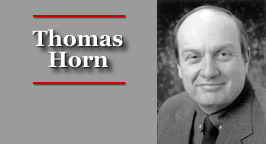
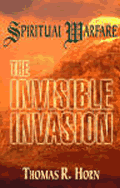
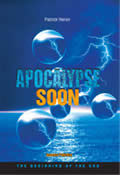



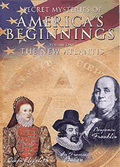




 Share
This Article
Share
This Article